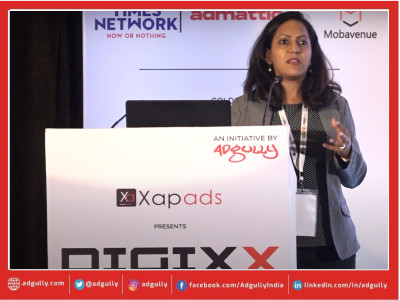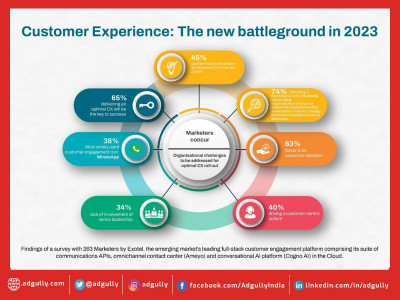Are marketers looking at data through the right lens?
One might question, are big data, data analytics, and business intelligence a case of FOMO (fear of missing out)? Or, are marketers at a real risk of sizing up a drab game plan to market products and services in a contextual sense?
Traditional marketers have always relied on their gut instinct to keep track of market trends, making guesswork common and unavoidable. This approach not only makes it difficult to stay ahead of changing market conditions but also in the measurement of campaigns and strategies efficacies to justify marketing spend. Fast forward to 2017, we are surrounded by Internet of things (IoT). Every click, page view, social media post, calls to service centre generates data.
There are definite use cases of successful data-driven marketing, where global brands have incorporated data ingeniously. For instance, Starbucks leverages location-based data, traffic data, demographic data, and customer data for market analysis before opening a new outlet. The team uses this information to make an informed choice of a location basis its potential to impact revenue growth as well as to determine the success rate of each new store, thus reducing financial risks.
Marketers with insights into the growing trove of data are equipped with more agility to formulate or adjust their strategy, business recommendations and decisions. They can course correct, spot opportunities, and be more responsive to their customers. In fact, a recent Gartner report suggests that by 2017, the CMO’s marketing tech spending will top CIO’s technology spend, as originally predicted by Gartner in 2012.
The data-driven marketing campaigns that have gone wrong typically are lacking structured data with visual appeal and a wealth of utility. Here are four questions you can ask your data team to gain insights and ensure effective business intelligence is leveraged.
Are we able to capture attention accurately with the data-driven marketing plan? Marketing is a challenge, especially as consumer choices multiply by the second in today’s market. Our browsing habits, favourite portals, and in fact, complete online/ offline presence across multiple touch points are fast becoming a valuable trove of information for brands and businesses. Analytics and data-savvy marketers should be able to find ways to engage in a contextual and timely manner.
Would we be maximising returns by seeing micro details in the data? As competition increases, marketers are turning to visual analytics solutions that help harness actionable insights to see and understand their data. Data-backed assessment and shorter lead time for insights mean marketers are more agile and responsive real-time. RedMart, a leading online grocery marketplace in Singapore with technical operations in India, analyses customer behaviours on web and mobile channels to derive real time insights into buying patterns and trends of consumers. The ability to visualise all the data meant that the Customer Relationship Management and Merchandise team could have more data-driven meetings – where everyone could see and understand the same data points, making data driven decisions.
Can we develop new offers “on the fly”? A data-driven approach means that marketers can spend more time looking forward. Relying on the data means that meetings become less focused on justifying marketing spend or actions with questions like “why did you did that?” and more of “What’s next?” and how to implement the next targeted activity or campaign. Consider Singapore and Indonesia based chain department store – Metro. Its marketing team constantly collects a variety of data at their stores, gaining valuable insights into peak and lull shopping periods, inventory flow, and customer purchase behaviours. By analysing the trends, the team is able to effectively plan operational and promotional strategies and consistently improve efficiency and sales performance. Through a data analytics platform, Metro has successfully integrated the use of data analytics into its retail operation. With this, the company has enhanced the way departments work and communicate with each other, streamlined logistical support to retail outlets, and designed customer-centric promotional campaigns. With fast and flexible data analysis, the Metro team is able to specifically target shoppers with specialised marketing campaigns as they are able to see and understand their customer’s buying history. For customers, this means they are targeted by promotions most appealing and relevant to them while saves on advertising costs and improves customer satisfaction exponentially.
Are marketers capable of evolving to offer Data analytics as a service? Some marketers are differentiating themselves by offering visual analytics capabilities as a “value add”. London-based marketing software company Revoo has built a consumer facing application within its existing client portal application that allows its clients to log-in and interact with data through embedded analytics. While Revoo hosts and manages the data, clients can access it to review results and ask their own questions using interactive dashboards. As evolved marketers you will be able to embrace data more effectively if you follow a few basics; communicate the complete ask effectively, ask the right questions, test a prototype or mock-up, and finally empower the engineers to play their part. These few steps are sure to help you deliver the desired results.
(The author, Anand Ekambaram, is Director Sales at Tableau India. Ekambaram is a strategic thinker and business leader with extensive expertise in managing organisations and business units, with a focus on driving profitable growth.)


















Share
Facebook
YouTube
Tweet
Twitter
LinkedIn